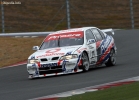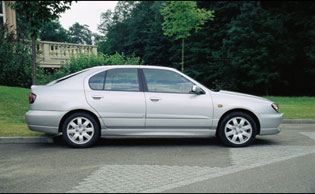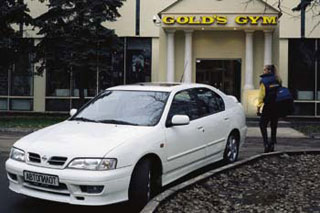Test drive Nissan Primera sedan 1996 - 1999 sedan
We will try on the third time
For the first time, the audience first saw the new generation of the popular model at the Russian second-Salon-99. The acceptor was originally designed for the European market, and therefore make it in England. Naturally, the main work on modernization also led in the Old World, good, here the concern has several powerful technical centers (shopping centers).
The wheel spun in November 1996, when Dave Godsel from the shopping center in Krange (England) presented a design project unifying sports and luxury. Having spent 26 months and 65 million pounds, a car, or rather a whole family with sedan bodies, hatchback and station wagon, prepared for serial production. The shopping shopping centers in Sanderland (England), Brussels (Belgium), Barcelona (Spain) also took part in the works. In Atsugi (Japan), a 1.8 -liter engine was specially developed and the CVT wedge -repair variator improved - the Japanese and the mustache themselves with a mustache.
The number of changes made about the depth of modernization indicates more than 600, of which 40 are cardinal. A characteristic difference in appearance - now fashionable crystalline, that is, with smooth glass, headlights. For the first time on a car of the D-class (relatively inexpensive) they are xenon, with increased lighting. An interesting touch: the headlights were checked for the strength of a hail of stones flying from under the Nissan-Patrol on a gravel road. The light blocks remain intact when hitting an obstacle at a speed of up to 8 km/h, for example, with sloppy parking.
Behind, the novelty can be identified by the integrated spoiler on the trunk lid. These changes in the appearance are quite functional - tests in the aerodynamic pipe in the Netherlands, where huge airbuses are also blown, made it possible to achieve excellent circuits of the circuit resistance: in the sedan and hatchback 0.3, and in the station wagon 0.33.
 The salon is renewed, in fact, completely - not without reason 6,500 human hours were spent on this. It became more spacious, the ranges of adjustments to the driver's seat increased; Children's seats are now attached directly to the body using the ISOFIX system. There were new flight comprehensive components, climate control with an economical compressor of performance variable, high-class audio system with a non-standard, and therefore no panel attracting thieves and much more. The lesser noise is also facilitated to improve comfort - on the highway, for example, it decreased by 45%.
The salon is renewed, in fact, completely - not without reason 6,500 human hours were spent on this. It became more spacious, the ranges of adjustments to the driver's seat increased; Children's seats are now attached directly to the body using the ISOFIX system. There were new flight comprehensive components, climate control with an economical compressor of performance variable, high-class audio system with a non-standard, and therefore no panel attracting thieves and much more. The lesser noise is also facilitated to improve comfort - on the highway, for example, it decreased by 45%. The developers paid special attention to measures against attackers. For example, approaching the car, you can remotely open all the doors, or you can only one driver's. If the kidnapper breaks the window, the inner handles are disconnected from the locks - the doors are blocked. Improved and passive safety. The bars in the doors, safety belts, two front and two large side pillows, which protect the head, are included in the standard equipment and protect passengers in the most serious accident. However, there is every reason to hope that it will not reach her. A multi -link suspension contributes to the exact follow -up of the trajectory, which retains the angles of the wheel installation practically unchanged. In addition, here, also for the first time in the D-class, now there is a smart brack of the prominent, that is, an assistant brake that increases the effectiveness of a vacuum amplifier during intense braking. Together with four -channel ABS and ventilated front brake discs, which only GT modification used to be equipped, this significantly reduces the stop distance.
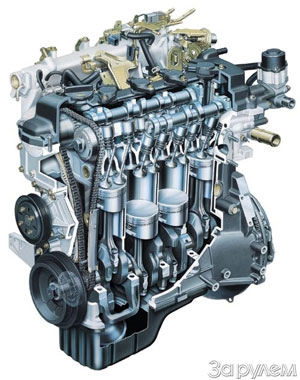 Since in this class a third of the cars sold in Europe is equipped with 1.8 liter engines, this was also developed for a new examples (in addition to 1.6 and 2 liters of engines). It has regulated phases of gas distribution, which made it possible to get an excellent result - 97% of the maximum torque are achieved in the range of 2400-4800 rpm. The brain-a 32-bit processor working with the on-board diagnostic system provides efficiency at the level of the previous 1.6-liter motor.
Since in this class a third of the cars sold in Europe is equipped with 1.8 liter engines, this was also developed for a new examples (in addition to 1.6 and 2 liters of engines). It has regulated phases of gas distribution, which made it possible to get an excellent result - 97% of the maximum torque are achieved in the range of 2400-4800 rpm. The brain-a 32-bit processor working with the on-board diagnostic system provides efficiency at the level of the previous 1.6-liter motor. The gamma of the engines also includes a 2-liter turbodiesel and modernized 1.6- and 2-liter gasoline units. It is curious that for long -term resource tests of new oils, one of the oil companies was chosen by this two -liter engine, as the most tenacious. The standard Nissan test is generally murderous - 40 hours of continuous work with full load at speeds, 15% higher than the most acceptable!
In addition to a mechanical gearbox, a two-liter engine (for the first time in the world for such a volume!) Aggregate with a wedge-repair variator of the KVTM-6 hypertension. Its main feature is the presence of not only an automatic mode (ordinary or sports), but also manual. In this case, the selector is transferred to the right into a special slot and acts as a gear lever. A short push forward or backward - the variator belt jumps up or down on one of the six fixed gears. There is no risk of overstrust or drown out the motor. With an increase in revolutions to the maximum box, it will independently move on the following gear, as well as turn on the neutral when stopping. Unlike other variators, here instead of clutch is a hydrotransformer, so that all switching occur without jerks, although very quickly.
They began to release the example of a new generation in the summer at the plant in Sanderland, which was recognized as one of the most effective in Europe. Since the launch in 1986, its conveyor left more than 2 million Nissanov. A general warranty is given for the car for three years or 100 thousand km and six years - from through corrosion of the body. In the fall, the novelty will appear in Russian dealers.
In a new engine with a volume of 1.8 liters, the toxicity of the exhaust meets the European norms of 2005.
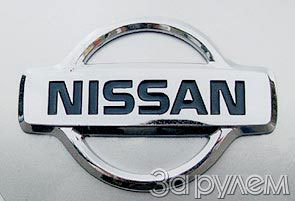
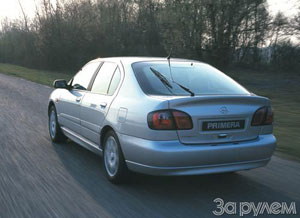
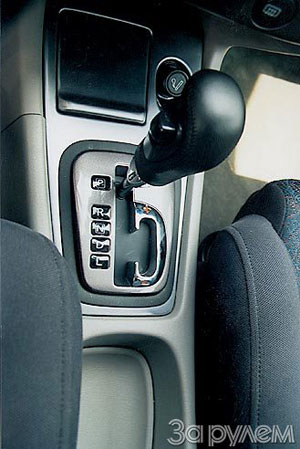

Yuri Nechetov.
Photo by the author and Nissan
Source: The magazine "Driving"
Video Crash tests Nissan Primera Sedan 1996 - 1999
Test drives Nissan Primera Sedan 1996 - 1999
Crash Test Nissan Primera Sedan 1996 - 1999
Krassh Test: Detailed Information19%
Driver and passengers
10%
Pedestrians



